5 Best Goblet Squat Alternatives (with Pictures!)
The goblet squat has cemented itself as a classic among athletes and conventional weightlifters alike - but what if it is entirely insufficient for their training needs?
Fortunately, there are quite a number of alternative exercises to the goblet squat, nearly all of which can replicate the purpose and benefits of their predecessor.
Because of the goblet squat’s nature as a lower body compound exercise that places the weight at the front of the torso, potential substitute movements can include those of the front squat, landmine squat or lunge - although more obscure exercises like sumo squats are just as suitable.
What is the Goblet Squat, and Why Should it be Substituted Out?
The goblet squat is a multi-joint compound movement involving the lifter holding a dumbbell or kettlebell at chest-height as they squat downwards, elbows held in the space between their legs.
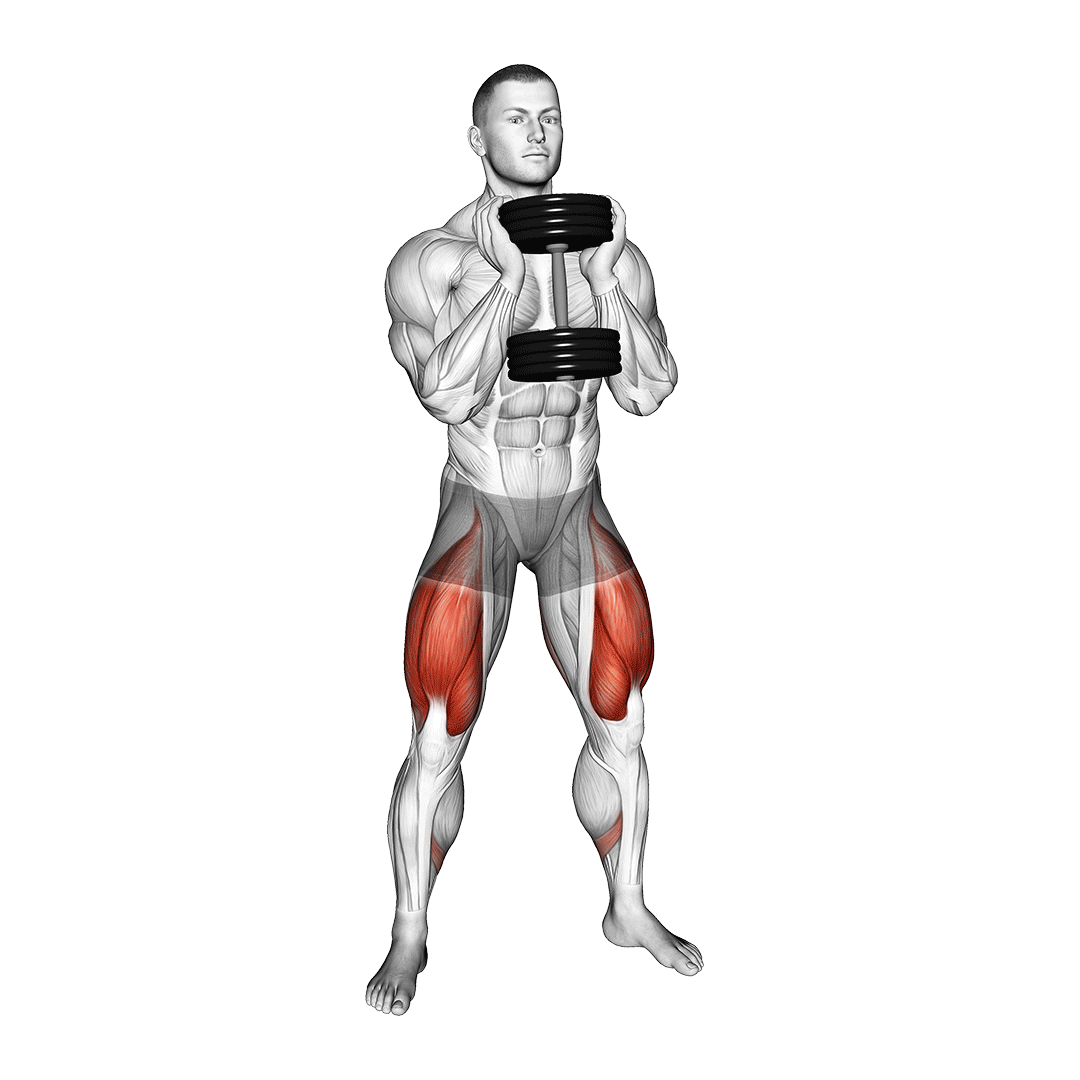
From a mechanical perspective, there are very few differences between the goblet squat and most other conventional squat variations (save for the positioning of the upper body), and as such this allows for quite a number of potential substitutes to the goblet squat, if needed.
Goblet squats are most often substituted due to the inherent weight limitation they feature, with the lifter progressively becoming unable to hold a sufficient amount of weight with their upper body as the strength of their lower body surpasses the muscles of the arms and shoulders.
Other reasons why the goblet squat may be substituted out involve the need for a more specific and targeted training stimulus, or due to individual preference among lifters.
Desired Aspects of a Goblet Squat Alternative
Unless otherwise specified by circumstance, the ideal goblet squat alternative will be one that is as close as possible to the goblet squat in terms of muscular recruitment and mechanics - while nonetheless still fulfilling the needs of the lifter.

This means an exercise that is multi-joint and compound in nature, as well as one that targets the muscles of the quadriceps femoris, gluteal muscle group and hamstrings.
Furthermore, lifters must also take into account non-mechanical aspects of their desired alternative; The sort of equipment they may have available, their current level of training experience and whether or not the substitute exercise fits into their training program must all be considered as well.
Goblet Squat Alternatives
1. Barbell Front Squats
Perhaps one of the closest possible approximations to the goblet squat is the front squat; a conventionally barbell-based multi-joint compound exercise with a similar focus on the muscles of the quadriceps and glutes.
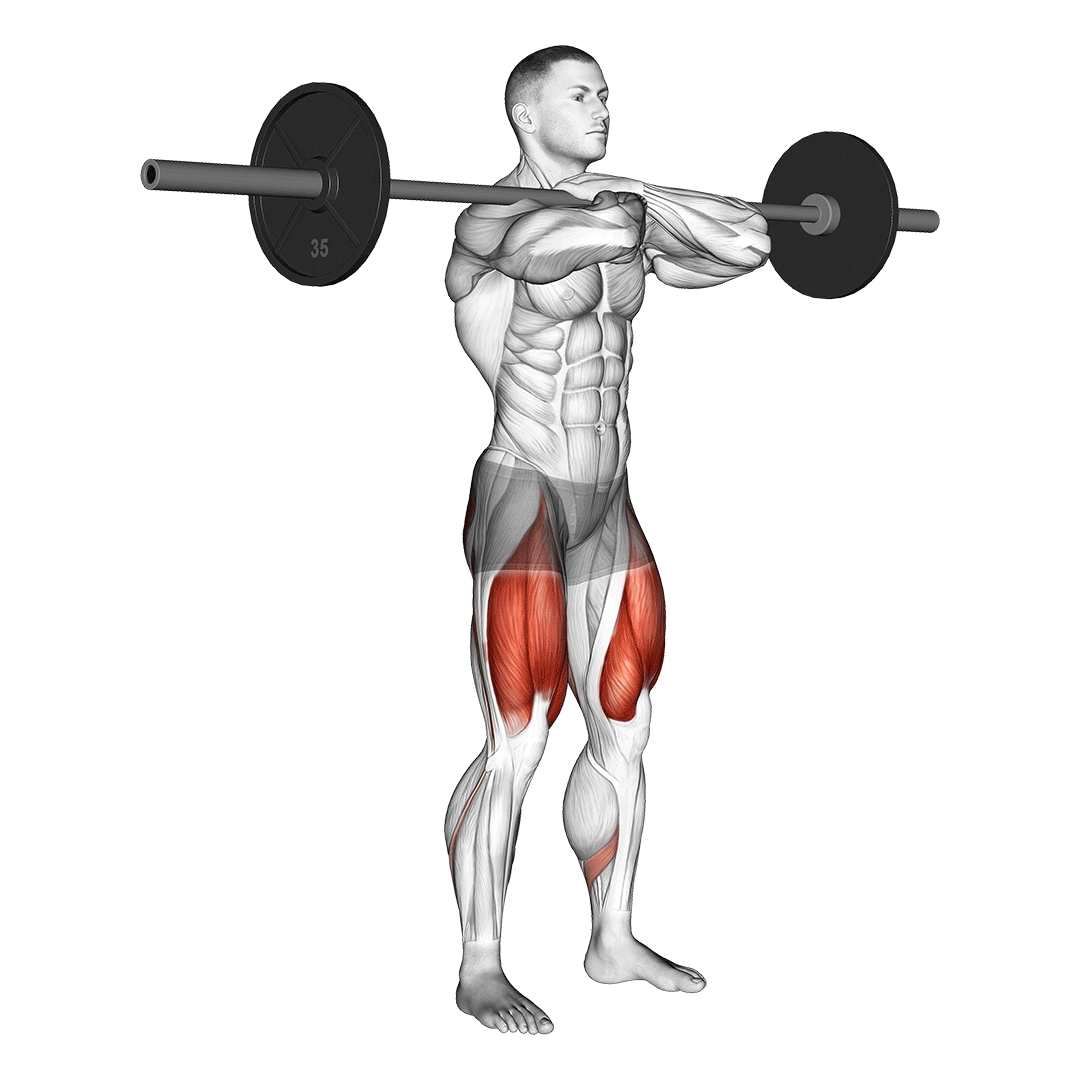
For lifters wishing to continue the flow of their progressive overload - or those who find the general upper body position of the goblet squat to be uncomfortable - the front squat should be the first alternative they look at.
That is, unless they are novices to resistance training. The front squat features a somewhat higher risk of injury and level of mechanical complexity to the goblet squat, and as such may not be the best alternative for lifters who are unfamiliar with intermediate squat mechanics.
Purpose as a Goblet Squat Alternative
Unlike goblet squats, barbell front squats allow for greater loading on account of the use of a barbell and the fact that they are performed with the torso in a more upright position, the elbows pointing forwards rather than downwards and additional emphasis being placed on maintaining proper upper back curvature.
Furthermore, although the front squat and goblet squat recruit the same muscles in the same order, the front squats place greater focus on the quadriceps femoris muscles and as such may be used as an alternative for training said muscles to a greater extent as well.
Muscles Worked
The front squat recruits the muscles of the quadriceps femoris, the glutes and the hamstrings. Other muscles worked to a less intense capacity are the core, erector spinae, and the deltoids.
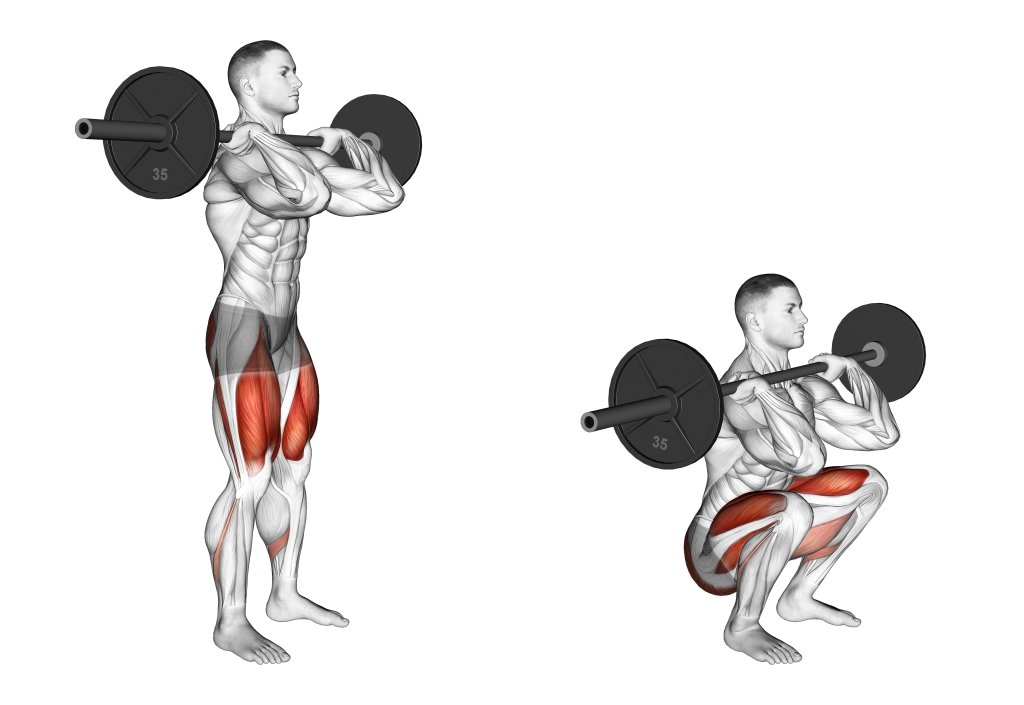
How-to:
To perform a repetition of front squats, the lifter will stand upright with a barbell racked across the top of a shelf produced by their deltoids, chest and clavicles.
The hands should be securing the barbell in this position, with the palms facing upwards and the elbows pointing forwards. The feet should be set shoulder-width apart with the core engaged and the lower back kept at a neutral curvature.
Then, bending at the hips and knees simultaneously, the lifter will lower themselves until the hip crease is at least parallel with the knees.
From this point, the lifter will push through their heels and return to their original position, thereby completing the repetition.
2. Landmine Squats
Mechanically similar to goblet squats but with the resistance placed at an angle, the landmine squat is a multi-joint compound exercise most often used as an alternative to goblet squats in cases where functionality is a priority, or when grip strength is the limiting factor with goblet squats.
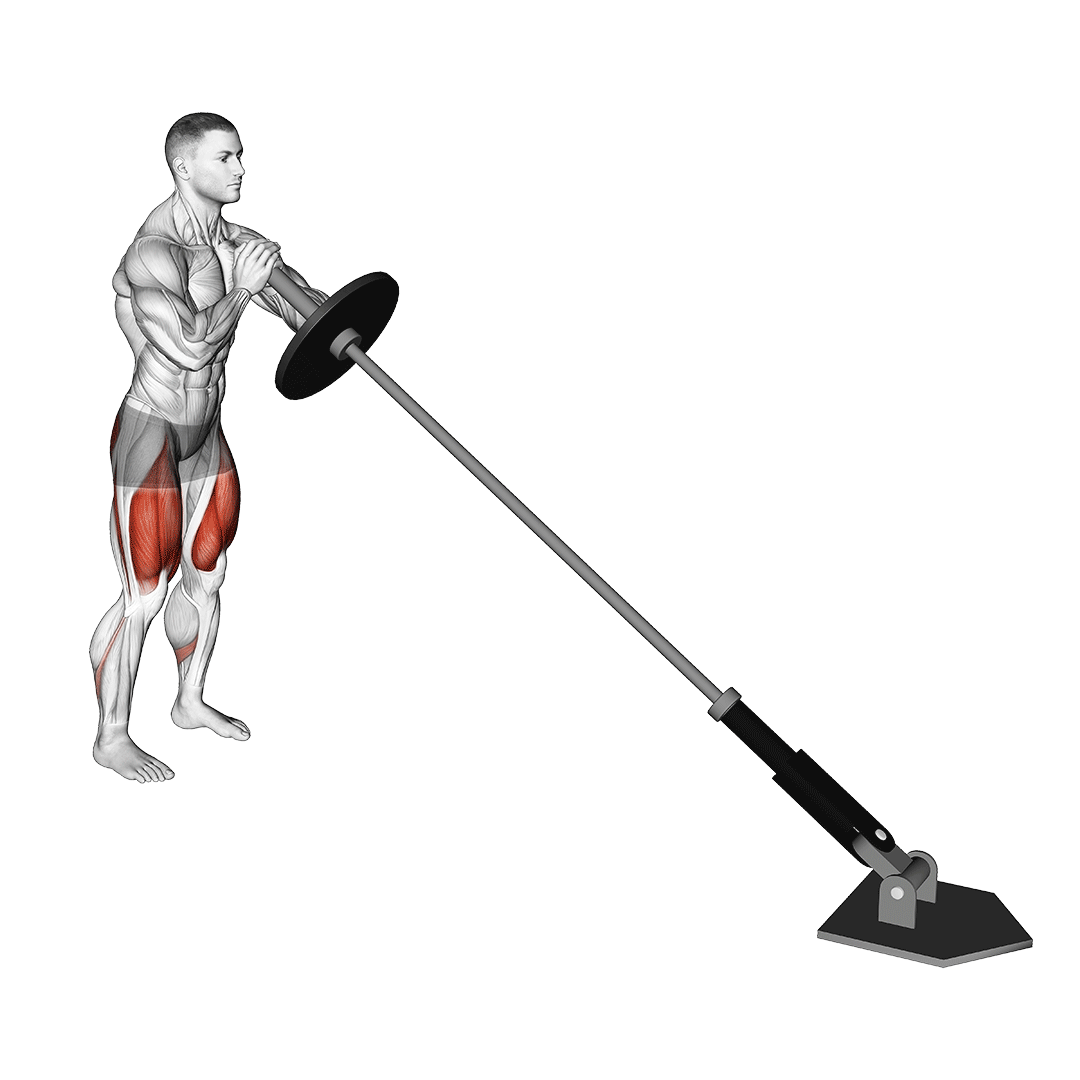
Landmine squats will require a barbell, set of weight plates and a landmine attachment to perform correctly.
Purpose as a Goblet Squat Alternative
Landmine squats can allow for a somewhat greater amount of weight to be loaded in comparison to goblet squats, but are more often used as a goblet squat substitute for the purposes of angle of resistance.
Unlike goblet squats, landmine squats angle the resistance in a less vertical direction, meaning that balancing is somewhat easier and the lifter can better recruit the muscles of their posterior chain by pushing the pelvis further back.
Muscles Worked
Landmine squats will work the muscles of the quadriceps, glutes and hamstrings - as well as utilize the deltoids, forearms, calves and core as stabilizing muscles.
How-to:
To perform landmine squats, the lifter will hold one end of a loaded barbell in both hands, keeping it close against their chest. The opposite end of the barbell will be locked into a landmine apparatus.
Standing upright with the legs shoulder-width apart, the lifter will push their pelvis back and bend at the hips and knees simultaneously, lowering themselves until they are at parallel depth or lower.
Then, pushing through the heels, the lifter will extend their pelvis and knees and return to the original standing position, thereby completing the repetition.
3. Dumbbell Lunges
In cases where the lifter requires a more dynamic and functional substitute to goblet squats, dumbbell lunges may be used instead.
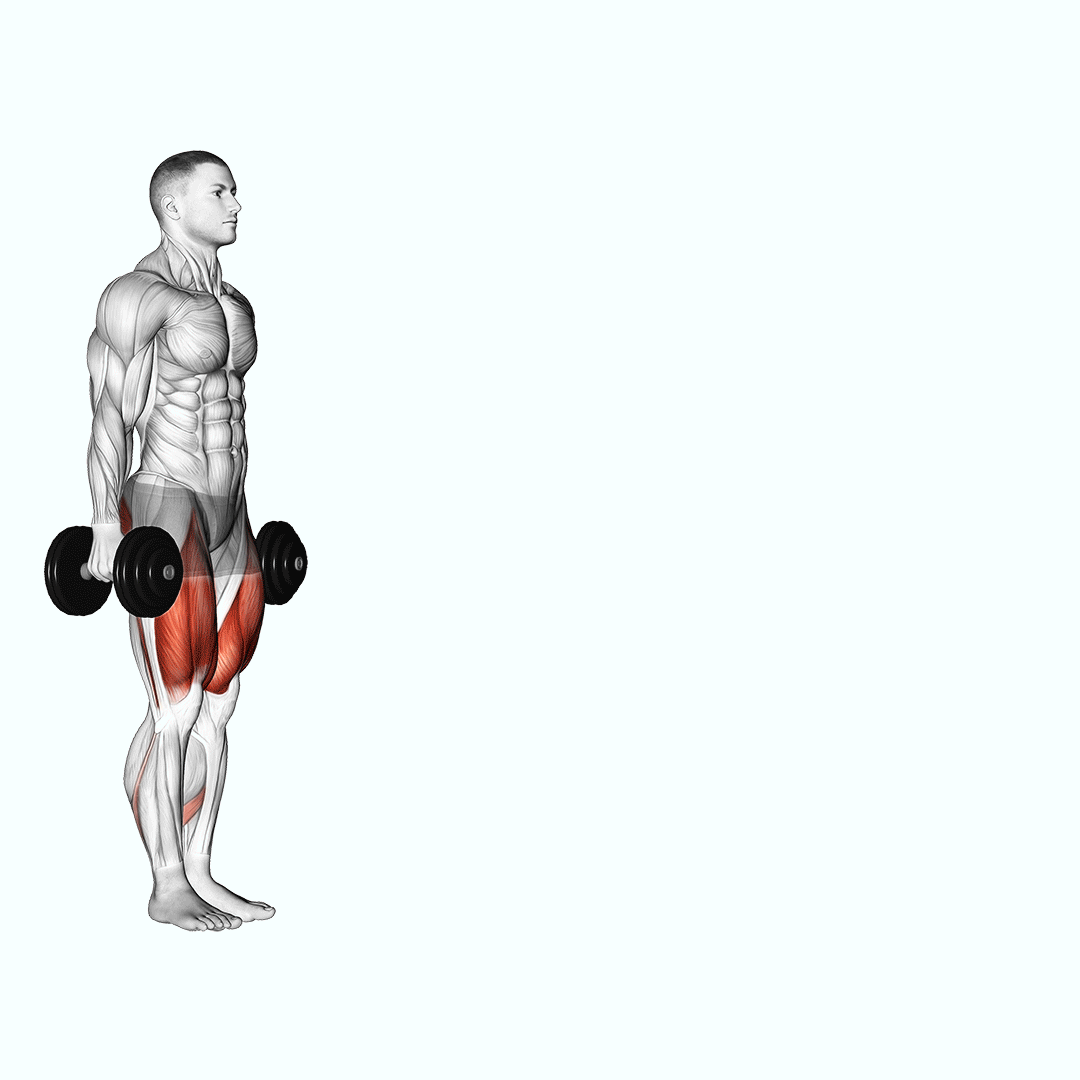
The dumbbell lunge in a multi-joint compound movement performed as either a primary or secondary compound exercise within lower body training programs.
They are often performed for high volume sets and are considered to be of a similar intensity to the goblet squat, although their unilateral nature can allow lifters to better focus on muscular contraction.
Purpose as a Goblet Squat Alternative
Dumbbell lunges allow lifters to substitute the goblet squat with an exercise that better focuses on one side of the body at a time.
In addition, lunges allow for greater contraction of the calves while simultaneously creating less vertical stress on the joints of the lower body.
Muscles Worked
Lunges will work the muscles of the quadriceps femoris, the glutes, the hamstrings and the calves. The core and erector spinae also play a role as stabilizers during the exercise.
How-to:
To perform a repetition of dumbbell lunges, the lifter will stand upright with a pair of dumbbells held in their hands.
Contracting the core and ensuring that the lower back is at a neutral curvature, the lifter will take an exaggerated step forward, shifting their weight to the same leg and bending the knees as they do so.
The opposite leg will stretch out behind them, with the lifter lowering themselves until the knee of the behind-leg is parallel to the floor.
From this position, they will return to a standing stance before repeating the action with the sides switched.
At this point, the repetition is considered to be complete.
4. Bulgarian Split Squats
For a truly unilateral alternative to the goblet squat, the Bulgarian split squat is the ideal candidate.
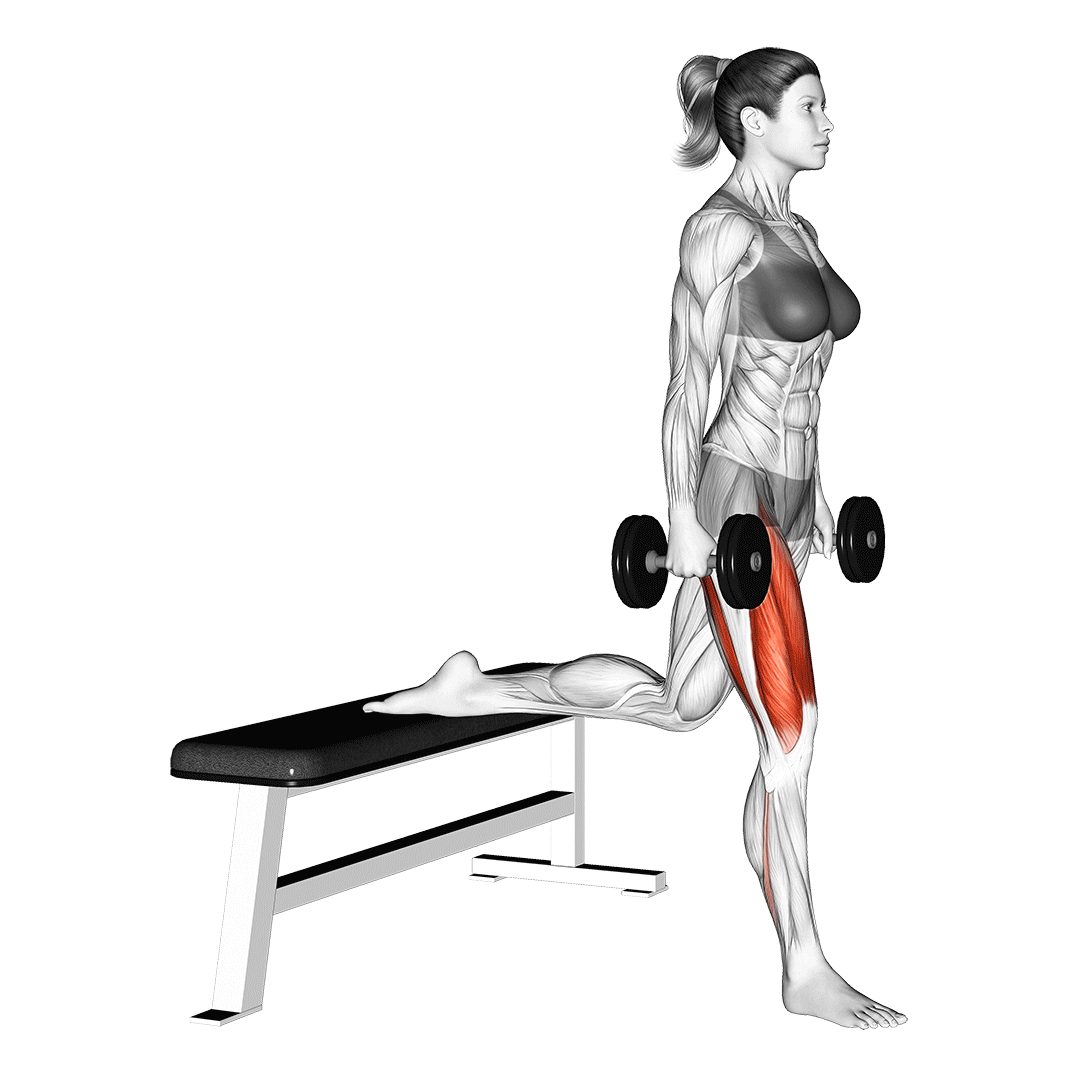
Like the goblet squat, the Bulgarian split squat is a multi-joint lower body compound exercise that makes use of a relatively small amount of weight to train the muscles of the legs.
They primarily differ in terms of movement pattern and mechanics, however, as the Bulgarian split squat involves the lifter elevating one leg behind them so as to better target the muscles of one side of the body.
In addition, Bulgarian split squats can allow for significantly less weight to be used as only one leg is targeted at a time - meaning that less equipment will be needed as well.
Purpose as a Goblet Squat Alternative
As mentioned previously, the Bulgarian split squat acts as the ideal unilateral alternative to the Bulgarian split squat, as well as one that is significantly less equipment-intensive in nature.
Muscles Worked
The Bulgarian split squat will recruit the muscles of the quadriceps, glutes and hamstrings - while simultaneously using the core and hip abductors/adductors as stabilizing muscles.
How-to:
To perform a repetition of the Bulgarian split squat, the lifter will stand with one foot atop a bench or chair behind them, weighted equipment held in both hands at chest height.

Contracting the core and pushing the chest out, the lifter will lower themselves by bending at the knee until the standing leg’s thigh is parallel with the ground.
From this position, the lifter will rise once again and repeat the action with the opposite side. Once both sides have been targeted, the repetition is considered to be complete.
5. Kettlebell Sumo Squats
Nearly identical to a goblet squat save for a significantly wider stance; the sumo squat features the feet being placed at a greater distance apart than what most individuals would perform a goblet squat at, resulting in greater recruitment of the posterior chain and a significantly deeper range of motion.

Just as is the case with most other squat variations, the kettlebell sumo squat is a multi-joint compound movement performed with the source of resistance placed at the front of the torso so as to better target the entirety of the lower body.
Purpose as a Goblet Squat Alternative
Kettlebell sumo squats can act as either a progression step or as a substitute to the goblet squat, as the former is both more technically complex and features a comparatively deeper range of motion - meaning that the kettlebell sumo squat is more difficult but potentially more effective as well.
Muscles Worked
Kettlebell sumo squats target the quadriceps, glutes and portions of the hamstrings muscle group.
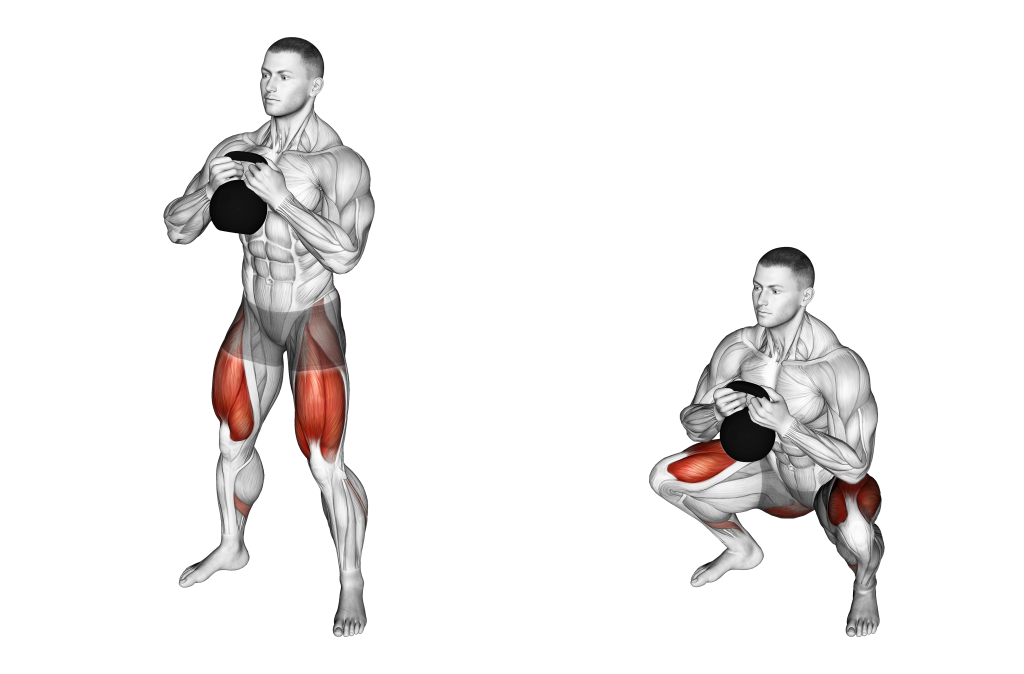
How-to:
To perform a repetition of the kettlebell sumo squat, the lifter will stand with their feet wider than shoulder-width apart, toes pointing outwards.
The kettlebell should be gripped in both hands at chest-height, with the core engaged and the lower back kept in a neutral curvature.
Then, bending at the knees, the lifter will lower their hips until the thighs are parallel to the floor. The knees should remain in-line with the toes and the torso upright so as to avoid injury.
Once the thighs are parallel to the floor, the lifter will push through their heels and return to their starting position, thereby completing the repetition.
Frequently Asked Questions (FAQ)
Are Goblet Squats Necessary?
Not at all - there are quite a number of goblet squat alternatives that emphasize many of its positive aspects, often without the same downsides or requirements.
If you find that the goblet squat isn’t the right exercise for you, picking a substitute that better meets your needs is the right path to follow.
Is the Goblet Squat a Good Alternative for the Leg Press?
While both exercises are quadriceps-dominant compound movements, the goblet squat may not be the best alternative to the leg press due to the difference in stabilization and loading capacity.

Better alternatives may be the hack squat machine or the barbell front squat, both of which may be loaded to a similar amount of weight.
Are Barbell Squats the Same as Goblet Squats?
Not quite - the barbell squat features a significantly different level of intensity, loading potential and muscular focus to the goblet squat.
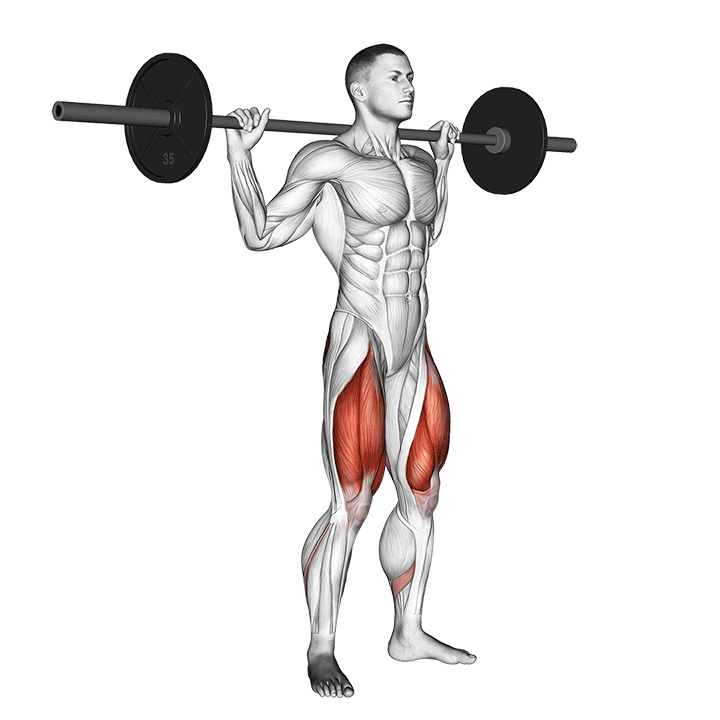
In comparison to the latter, the barbell squat places the weight at the top of the back, meaning that the spine is immediately loaded vertically - and will also place less focus on the quadriceps, shifting more of the training stimulus to the posterior chain instead.
Final Reminders
If you haven’t found the perfect goblet squat alternative in this list, try investigating exercises that are not necessarily related to the goblet squat in terms of mechanics.
For the purposes of greater strength or intensity, the back squat is a good option. For something more explosive, jump squats are perfect. Broadening the scope of your exercise selection may help immensely.
Remember that none of the aforementioned exercises are necessarily effective or even safe unless performed with correct form, and that seeking out the advice of a professional athletic coach may be the best bet if you are unsure of a certain aspect of your training.
References
1. Collins, Kyle S et al. “Differences in Muscle Activity and Kinetics Between the Goblet Squat and Landmine Squat in Men and Women.” Journal of strength and conditioning research vol. 35,10 (2021): 2661-2668. doi:10.1519/JSC.0000000000004094
2. Shaw, Trevor, and Lamar Dulin. "Therapeutic Effect of the Goblet Squat." Orthopedics and Sports Medicine: Open Access Journal 5, no. 5 (2022): 586-87. DOI: 10.32474/OSMOAJ.2022.05.000223.
